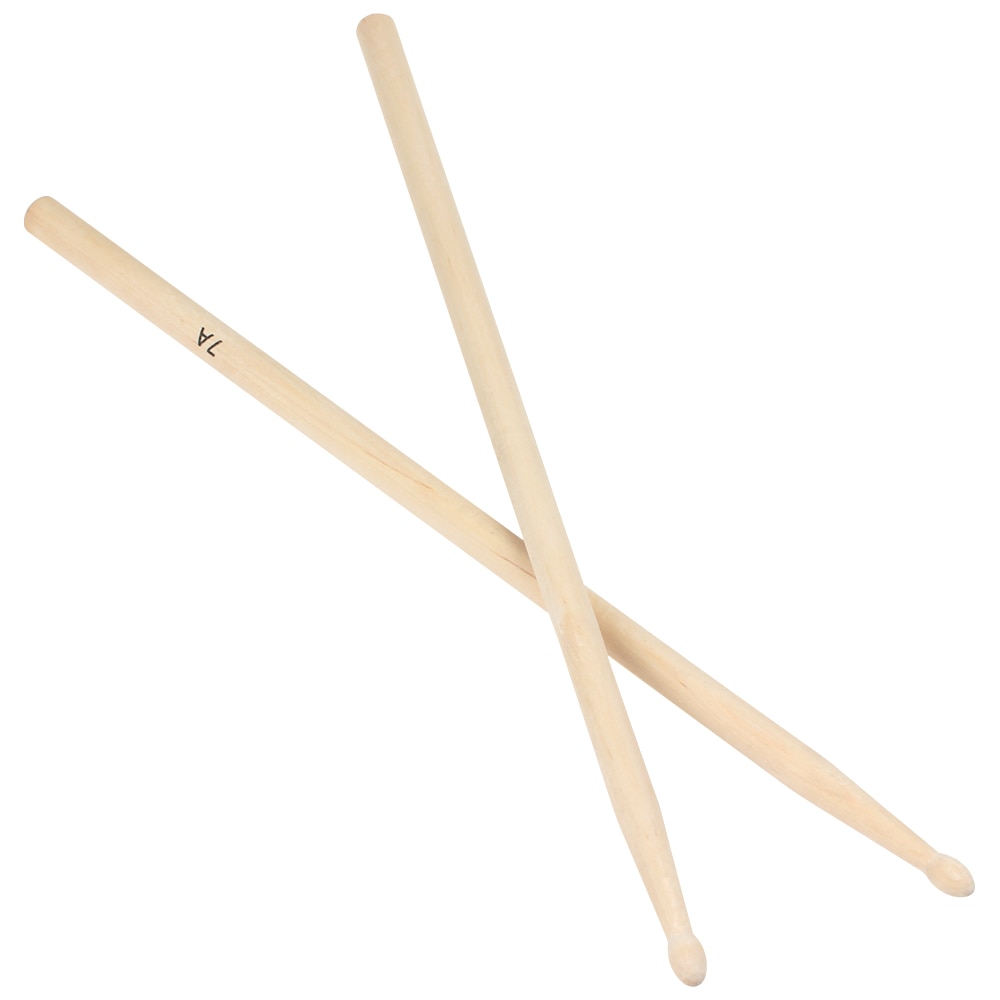A common topic of discussion among drummers is how ‘best’ to grip the sticks and the ‘best’ technique to use. Of course, the only correct response to all of these is that the ‘best’ technique is whichever allows you to play the music you want to play, as comfortably as it is possible for you to do so. For many people, this means picking an approach and learning how to do everything with that consistent approach. For right-handed players, this is commonly right-hand lead (i.e. your hands cross when playing hi-hat and snare) with matched grip (i.e. you hold both sticks like you’ve just picked them up off a table). The advantage of doing things this way is removal of ambiguity. Your brain has internalised one way to play a particular phrasing, and so you are less likely to get muddled on the kit.
However, unless you are truly 100% ambidextrous, you will always have one side that is a bit more capable of fine motor movements than the other. Because of this, I find that (at least for me) a more effective strategy is to change your grip or approach to suit what I’m playing. That way, I’m able to shift the burden of the most complicated parts to my more developed or dexterous muscle groups, and the simpler parts to the less developed ones.
At the moment, you can see me playing open-handed, which is left hand on the hi-hat. This is my default method of playing and is the way I taught myself to play, since it’s what I find the most natural for most music. I will briefly point out that my kit is set-up in the regular right-handed style, except that I have more cymbal action going on the left. My ride is directly above the snare so I can play with either hand without crossing, and I have a trash cymbal or china cymbal on my far left. In an ideal world, I’d have a completely symmetric setup, but we all have space and money limitations after all.
Left-hand lead, matched grip
Coming back to the hands, there are two elements to playing this way. The first element is using the left hand on the cymbals to outline the main feel of time (which is typically the role that the hi-hat or ride cymbal plays in a song). I am right-handed, and so my left hand is weaker. However, what it can do well is play simple and constant patterns. It’s my ‘autopilot’ hand. This works well for outlining quarter or eighth note feels, which is essentially the norm in most pop, rock, and metal music. The second element is the open-handed approach. Because my hands are not crossing, I am free to explore the bulk of the kit with my right hand. And since my right hand is stronger, I can add interesting elements to grooves. It makes fills easier since your right hand is always on or near the snare. The left hand being the autopilot hand also means you can kind of keep it going as a constant pulse while you play more complicated polyrhythms around it.
Right-hand lead, matched grip
What I find, and what you may find as well, is that when you are playing the drums, most of your limb movements are automatic (at least once you get past being a complete beginner). You can only really focus your attention on one thing at a time, so this level of unconscious processing is necessary on any instrument. When I’m playing left hand lead with simple cymbal patterns, I’m using relatively little mental bandwidth. This allows me to focus on more interesting things with other limbs.
However, there is something of a crossing point, after which I have to focus all of my mental bandwidth on my left hand in order to keep it in check. This usually happens either when the tempo gets too quick and I’m playing a lot of notes (for example, 16th notes), or when I have to play something that requires quite a bit of syncopation. A lot of the time, I do still choose to play this with left-hand lead for various reasons. But it is often more comfortable and sounds a bit ‘smoother’ if I then switch to right-hand lead. Turning up the complexity of the cymbal work further, I will pretty much exclusively start to use right-hand lead when it comes to shuffle or swing jazz type grooves. One thing I’ll point out with my setup (which is an advantage of having an electronic kit) is that I’ve set the rim of my second tom to be a hi-hat as well. This allows me to sometimes play fast 16th note two-handed patterns or right-hand lead for a short time within a song, whilst maintaining my open-handed posture.
Right-hand lead, traditional grip
Although it’s my least used playing style, I will use right-hand lead with traditional grip when playing swing jazz or complex shuffle grooves with a lot of ghost notes or other snare work. Ergonomically, I don’t think you can argue that traditional grip makes more sense than matched grip (unless you’re Buddy Rich, but then he thought that anything he did was the best technique). The traditional grip was invented for marching band snare drummers that had the drum strapped to them at an angle. However, probably because a lot of jazz drummers learned that way, there are a lot of proficient drummers that have figured out how to make traditional grip work on a modern kit (Vinnie Colaiuta, Dave Weckl, Virgil Donati, Jojo Mayer, etc.).
The reason I don’t use it much is because it feels quite restrictive in terms of movement around the kit. Of course, the drummers I mentioned previously have made it work for them, and the beauty of playing drums or percussion is that you have free reign to set up the instrument in a way that works for you. Still, I find that it’s not a particularly efficient way of approaching a larger kit (there’s a reason why classic jazz kits have a large floor tom and only one rack tom…)
However, it has one major advantage for your weaker hand. When you play matched grip, you are mainly using an up-and-down wrist movement to make the final motion that hits the drum. With traditional grip, you are mainly using the rotation of your forearm to make the final motion that hits the drum. I find that because this is a larger muscle group, the weaker hand has an easier time of it because it uses a lot less effort to make that final motion. You can grip the stick quite loosely and use a lot of rebound to make the the stick and head do most of the work. This means that for the same amount of work, you can often play more notes. Additionally, the rotational motion seems to make it easier to play at a lower volume, at least for me, which helps with playing more dynamic or subtle phrases on the snare. Of course, jazz is full of this stuff, which is often, I think, why you see so many jazz drummers stick to traditional grip. Personally, I can do drum rolls and one-handed roll type ideas far more easily this way, which means that when I want to focus on so called ‘snare drum playing’ rather than ‘drum kit playing’, I’ll revert to traditional grip. It’s quite handy for jazz solos too.
In conclusion…
I stress again that playing the way that you feel most comfortable, and the way that allows you to play at the best of your abilities is the most important thing to do. However, I hope that by sharing how I personally vary my approach, it might help you to understand some of the relative merits of different hand techniques you can use on a drum kit.


I recenty saw a video interview with Stewart Copeland, where he claimed that Charlie Watts led with his foot. I found it fascinating, but a bit confusing. Thoughts?
I was mostly focusing on ‘strong hand’ vs ‘weak hand’ here but there’s probably a different discussion to be had about how to think about hands vs feet. I’m not sure what he meant in that example, but often if you want to lock in time, I’ve heard others say that if you think about your feet first, your hands will follow.